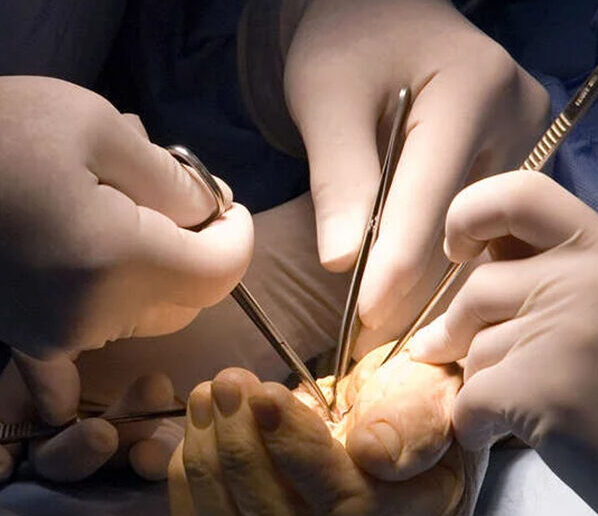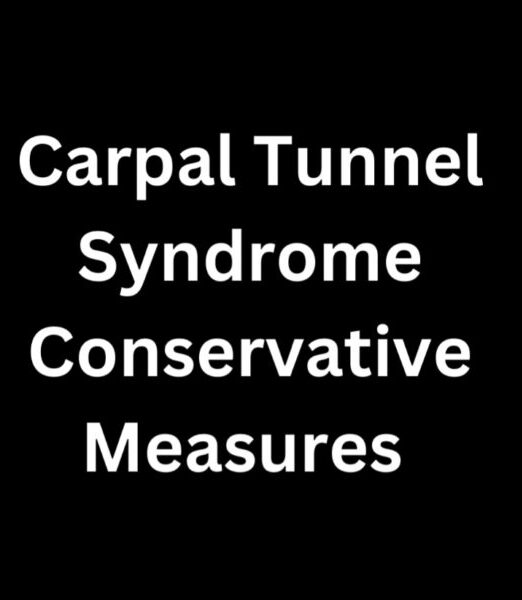The cost of Carpal Tunnel Release surgery can widely vary. Dr. Azouz will determine the cost of surgery through a medical history and physical examination. Many insurance companies consider Carpal Tunnel Release surgery medically necessary. Carpal Tunnel Release are one of the most common wrist ailments, and Dr. Azouz’s experience allows him to comfortably recommend the best possible treatment for his patients.
Carpal Tunnel Surgery: Dallas Plastic and Hand Surgeons Dr. David and Solomon Azouz Offer Effective Treatment with Rapid Recovery Surgery
Dallas Plastic and Hand Surgeon Dr. David and Solomon Azouz review carpal tunnel syndrome:
symptoms, surgical and non-surgical treatment, cost, insurance, and recovery.
What Is Carpal Tunnel Syndrome?
Carpal tunnel surgery treats carpal tunnel syndrome, which occurs when a tunnel in the wrist becomes narrowed. There are nine tendons and one nerve in the wrist. The median nerve provides both sensation and flexion to four and a half fingers in the hand. When the tissues surrounding the flexor tendons swell, pressure is placed on the median nerve. This tissue is called synovium. Normally, the thin synovium layer lubricates the tendons, making it easier to move your fingers and surround a healthy nerve.
When the synovium swells, it takes up space in the carpal tunnel and, over time, crowds the nerve. This abnormal pressure on the nerve can result in pain, numbness, tingling, and weakness in the hand.
Carpal tunnel syndrome is caused by pressure on the median nerve. It is also known as median nerve compression.
The median nerve runs from your forearm through a passageway in your wrist (carpal tunnel) to your hand. It provides sensation to the palm side of your thumb and fingers, except the little finger. It also provides nerve signals to move the muscles around the base of your thumb (motor function).
Additionally, the ulnar nerve can be compressed with or without compression of the medial nerve. The ulnar nerve provides sensation to the little and ring fingers on the palmar side of the hand.

Anything that squeezes or irritates the median nerve in the carpal tunnel space may lead to carpal tunnel syndrome. A wrist fracture can narrow the carpal tunnel and irritate the nerve, as can the swelling and inflammation resulting from arthritis. An acute or repetitive work injury can also lead to carpal tunnel syndrome.
Some patients have carpal tunnel syndrome after an acute injury known as: “acute carpal tunnel syndrome”. In other patients, there is no single cause. In patients with chronic carpal tunnel syndrome, there may be a combination of risk factors contributing to the development of the condition. Often patients who develop carpal tunnel syndrome will also develop other nerve compression syndromes. These included ulnar nerve compression at the wrist and elbow (cubital tunnel syndrome) or compression of the ulnar nerve in the Guyon canal. Patients can also develop a compression of the radial nerve in the forearm.
Symptoms
Carpal Tunnel Symptoms
Symptoms of carpal tunnel syndrome may include:
Numbness, tingling, burning, and pain —primarily in the thumb, index, middle and ring fingers.
Occasional shock-like sensations that radiate to the thumb, index, middle, and ring fingers.
Pain or tingling that may travel up the forearm toward the shoulder
Weakness and clumsiness in the hand—this may make it difficult to perform fine movements such as buttoning your clothes.
Dropping things —due to weakness, numbness, or a loss of proprioception (awareness of where your hand is in space).
Dropping things —due to weakness, numbness, or a loss of proprioception (awareness of where your hand is in space).
In most cases, the symptoms of carpal tunnel syndrome begin gradually—without a specific injury. Many patients find that their symptoms come and go at first. However, as the condition worsens, symptoms may occur more frequently or may persist for longer periods of time.
Night-time symptoms are very common. Because many people sleep with their wrists bent, symptoms may awaken you from sleep. During the day, symptoms often occur when holding something for a prolonged period of time with the wrist bent forward or backward, such as when using a phone, driving, or reading a book.
Many patients find that moving or shaking their hands helps relieve their symptoms. Patients may also have finger stiffness, especially in the morning.

Carpal Tunnel Surgery
Carpal tunnel release (median nerve decompression):
Surgery for carpal tunnel syndrome is appropriate for patients with severe symptoms or for those who do not respond to non-surgical treatments. Carpal tunnel release is considered the definitive, gold standard treatment for carpal tunnel syndrome.
The goal of carpal tunnel surgery is to relieve pressure on the median nerve by releasing the transverse carpal ligament (carpal tunnel ligament).
The surgery may be performed with two different techniques: an open or endoscopic release.
Minimally invasive endoscopic surgery:
Dr. Azouz uses a telescope-like device with a tiny camera attached to it (endoscope) to see inside the wrist and carpal tunnel. Dr. Azouz cuts the ligament through one or two small incisions in the hand and/or wrist while protecting the median nerve and tendons.
Endoscopic surgery may result in less pain than does open surgery in the first few days or weeks after surgery. Endoscopic surgery does pose a risk of incomplete release in patients who are not carefully selected. Dr. Azouz will determine if you are a candidate for open or endoscopic surgery. Most patients are not candidates for endoscopic surgery if they are older, have severe disease, or have significant synovitis.
Short scar open surgery and carpal tunnel release:
Dr. Azouz makes an incision in the palm of your hand over the carpal tunnel and cuts the ligament to free the nerve. As a plastic surgeon, Dr. Azouz is careful to conceal the scar in the palm of the hand and utilizes the shortest scar possible. As a microsurgeon, Dr. Azouz is able to perform internal neurolysis and synovectomy if necessary to remove as much scar tissue as possible. This is not possible with an endoscopic technique.
The risk of carpal tunnel release and techniques Dr. Azouz utilizes to minimize complications include:

Possible Risks
- Incomplete release of the ligament
- Wound infections
- Scar formation
- Nerve or vascular injuries

Dr. Azouz Minimizes Risk By:
- Careful patient selection and direct nerve visualization
- Meticulous sterile technique
- Scar removal, neurolysis, synovectomy, ligament excision
- Direct visualization, meticulous technique
Recovery
Healing after carpal tunnel surgery
During the healing process after surgery, soft tissues accommodate to allow more room for the nerve. This internal healing process typically takes several months, but the skin heals in a few weeks. The nerve will regenerate at the rate of 1mm per day in most patients. Smokers generally take longer to heal, and Dr. Azouz recommends quitting smoking prior to carpal tunnel release and hand plastic surgery procedures.
Carpal tunnel surgery results
For most patients, surgery will improve the symptoms of carpal tunnel syndrome, including improvements in pain, waking at night, numbness, and tingling. Recovery, however, may be gradual and complete recovery may take up to a year as the nerve regenerates.
Hand therapy
Dr. Azouz may refer you to a hand therapist who can help you maximize your recovery. Hand therapists are usually physical or occupational therapists who are very helpful in performing and instructing a patient on the performance of hand exercises, scar massage, and splinting.
Concurrent hand problems
If you have another condition that causes pain or stiffness in your hand or wrist, such as arthritis or tendonitis, it may slow your overall recovery. In long-standing cases of carpal tunnel syndrome with severe loss of feeling and/or muscle wasting around the base of the thumb, recovery will also be slower. Dr. Azouz explains that sometimes other hand problems that may have existed prior to carpal tunnel release may reveal themselves as the symptoms are no longer masked by carpal tunnel syndrome.

Carpal Tunnel Frequently Asked Questions
Non Surgical Treatment For Carpal Tunnel
If the condition is diagnosed early, nonsurgical methods may help improve carpal tunnel syndrome, including:
Wrist splinting:
A splint that holds your wrist still while you sleep can help relieve nighttime symptoms of tingling and numbness. Nighttime splinting may be a good option if you’re pregnant. Dr. Azouz will avoid operating during pregnancy if at all possible.
Nonsteroidal anti-inflammatory drugs (NSAIDs):
NSAIDs, such as ibuprofen (Advil, Motrin IB, others), may help relieve pain from carpal tunnel syndrome in the short term but do not change the anatomy of a compressed carpal tunnel.
Corticosteroids:
There is no evidence that steroid injections or oral steroids improve carpal tunnel permanently. A steroid injection can temporarily improve carpal tunnel syndrome and can be diagnostic. Steroid injections are some times ultrasound-guided.
Corticosteroids decrease inflammation and swelling, which relieves pressure on the median nerve. Oral corticosteroids aren’t considered as effective as corticosteroid injections for temporarily treating or diagnosing carpal tunnel syndrome.
If carpal tunnel syndrome is caused by rheumatoid arthritis or other inflammatory arthritis, then treating arthritis may reduce symptoms of carpal tunnel syndrome. However, carpal tunnel syndrome is an anatomic problem as an anatomic problem surgery remains the gold standard (best) for treatment.
Surgical Management
Surgery is the gold standard (best) for treatment and is definitive in treating median nerve compression (carpal tunnel syndrome).
Dr. Azouz's Locations
Dr. Azouz has privileges at a variety of hospitals and emergency rooms throughout the DFW metroplex including Dallas, Fort Worth, Richardson, Plano, Flower Mound, Addison. Patients frequently travel to see Dr. Azouz from Frisco, Allen, Mckinney, Arlington and Rockwall. It is not uncommon for patients to even travel from across Texas including East Texas (Tyler, Longview), West Texas (Midland, Odessa) and central Texas (Waco, Austin) to see Dr. Azouz.
If the condition is diagnosed early, nonsurgical methods may help improve carpal tunnel syndrome, including:
Wrist splinting:
A splint that holds your wrist still while you sleep can help relieve nighttime symptoms of tingling and numbness. Nighttime splinting may be a good option if you’re pregnant. Dr. Azouz will avoid operating during pregnancy if at all possible.
Nonsteroidal anti-inflammatory drugs (NSAIDs):
NSAIDs, such as ibuprofen (Advil, Motrin IB, others), may help relieve pain from carpal tunnel syndrome in the short term but do not change the anatomy of a compressed carpal tunnel.
Corticosteroids:
There is no evidence that steroid injections or oral steroids improve carpal tunnel permanently. A steroid injection can temporarily improve carpal tunnel syndrome and can be diagnostic. Steroid injections are some times ultrasound-guided.
Corticosteroids decrease inflammation and swelling, which relieves pressure on the median nerve. Oral corticosteroids aren’t considered as effective as corticosteroid injections for temporarily treating or diagnosing carpal tunnel syndrome.
If carpal tunnel syndrome is caused by rheumatoid arthritis or other inflammatory arthritis, then treating arthritis may reduce symptoms of carpal tunnel syndrome. However, carpal tunnel syndrome is an anatomic problem as an anatomic problem surgery remains the gold standard (best) for treatment.
Surgical Management
Surgery is the gold standard (best) for treatment and is definitive in treating median nerve compression (carpal tunnel syndrome).
Dr. Azouz has privileges at a variety of hospitals and emergency rooms throughout the DFW metroplex including Dallas, Fort Worth, Richardson, Plano, Flower Mound, Addison. Patients frequently travel to see Dr. Azouz from Frisco, Allen, Mckinney, Arlington and Rockwall. It is not uncommon for patients to even travel from across Texas including East Texas (Tyler, Longview), West Texas (Midland, Odessa) and central Texas (Waco, Austin) to see Dr. Azouz.




